Mosquito II:
Return of the Wrigglers
Photos taken:
Late June to Early July
I briefly showed a few of the mosquito larvae living in the pond area last summer, but I didn't have a macro lens at the time so the best photo I got was this blurry one. Fortunately they've returned to the pond this year, so I've managed to get some photos that show off much more detail.

I love these guys so much! Easily one of my favourite bugs to watch at the moment thanks to the strange way they move through the water. The larvae don't have a traditional way to swim so instead they jerk their entire body left and right to flick themselves around at odd angles, which is why they're sometimes called wrigglers. They're fast too! Just casting a small shadow over the water will cause a cloud of black squiggles to dart around the pool.
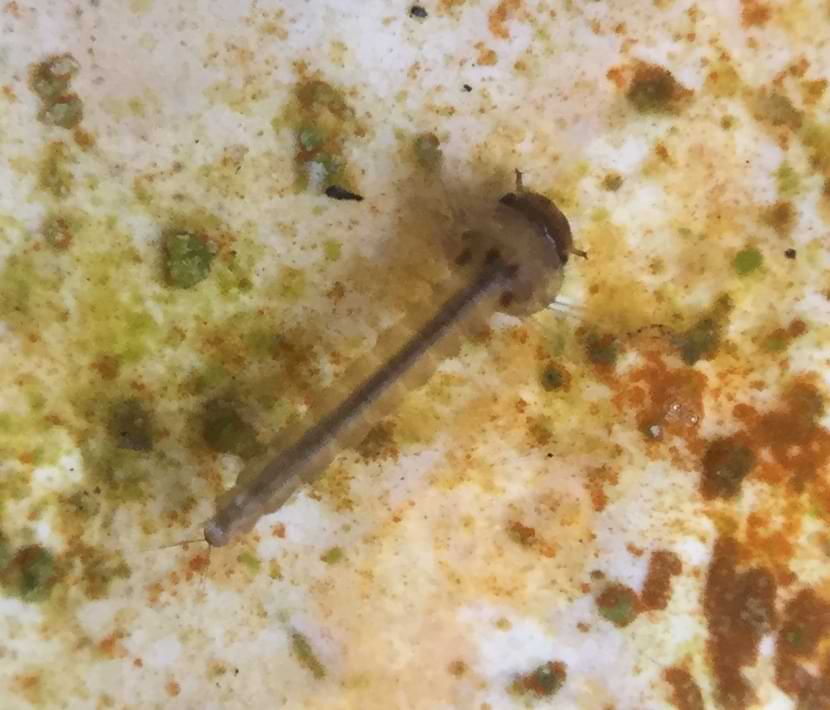
Because they don't have gills the larvae breathe air out of their siphon, which is a snorkel-like tube on their tail-end that they poke up out of the surface of the water. They spend most of their time like this so it was hard to get any photos of their heads; the photo above is the only one I managed to take. They have two very cute eyes and a mouth full of bristles that they brush against rocks to eat algae and microbes. Watching them eat is also very cute!
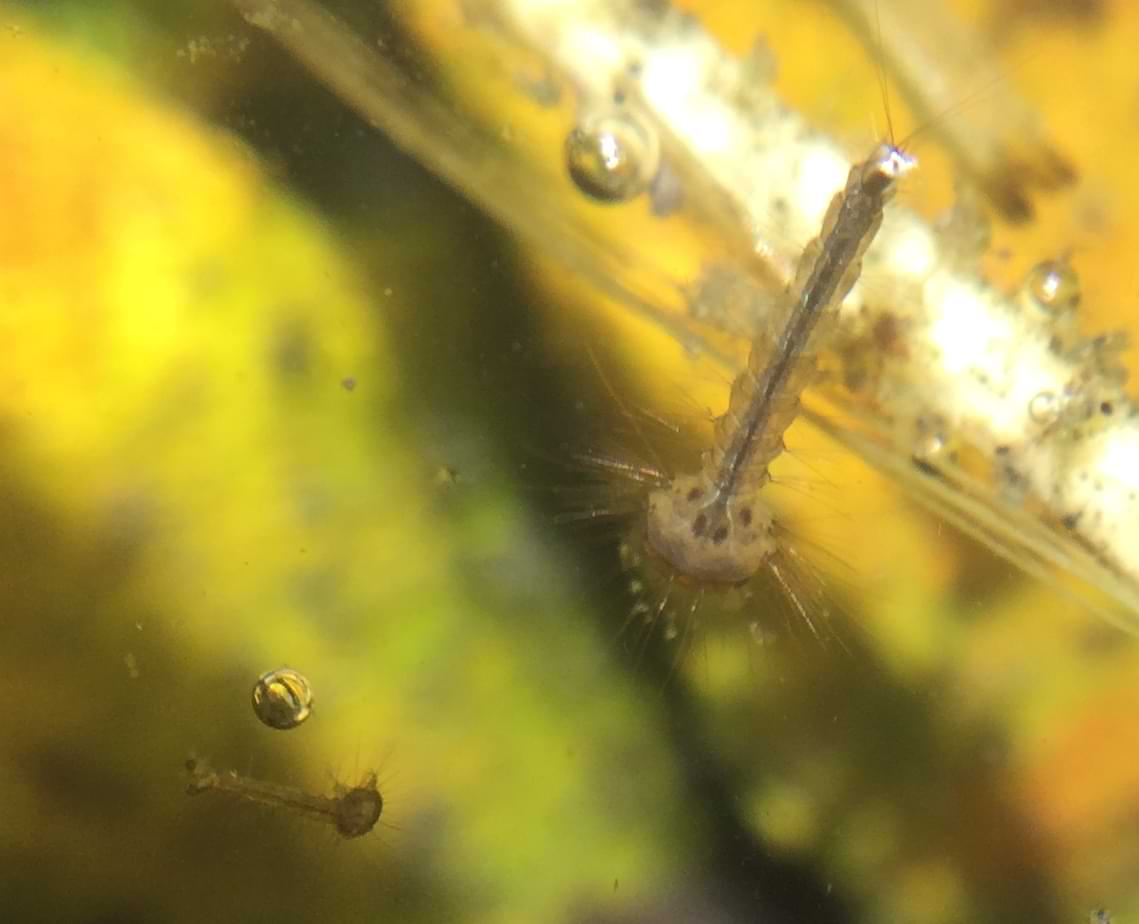
This is my favourite image, it shows just how big the mosquitoes can grow in the short time they spend as a larvae! On the bottom left is a fairly young mosquito — perhaps just newly hatched — and on the right is one that was probably close to pupating.
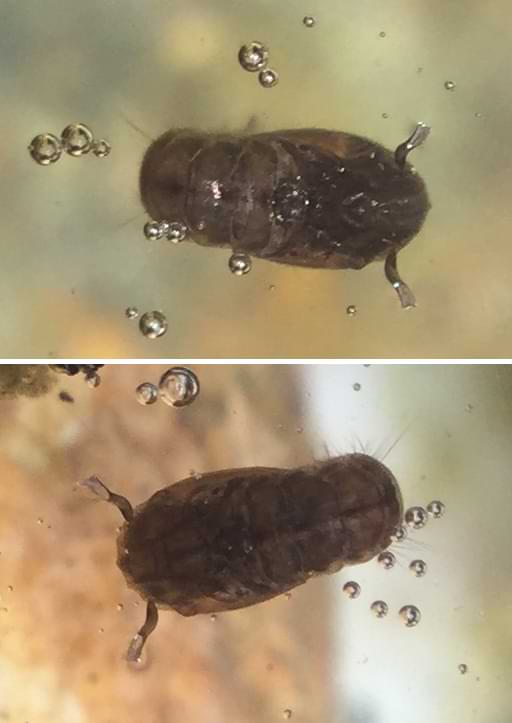
And their pupal forms look like this! A kind of strange comma-shaped creature. These have even less flexibility in terms of swimming than their previous stages, and are commonly called tumblers due to the quick rotating motions they make through the water. At the ends of their head you can see two little trumpets which they poke out of the water's surface to breathe from.
And after pupating they of course turn into these recognisable bugs. There's lots of mosquitoes around the pond, presumably dropping off new eggs into the water.

Also wriggling around the pond was lots of these worm things which might be another type of fly. Lots of flies have similar looking aquatic larval stages, so identifying them is a bit tricky.
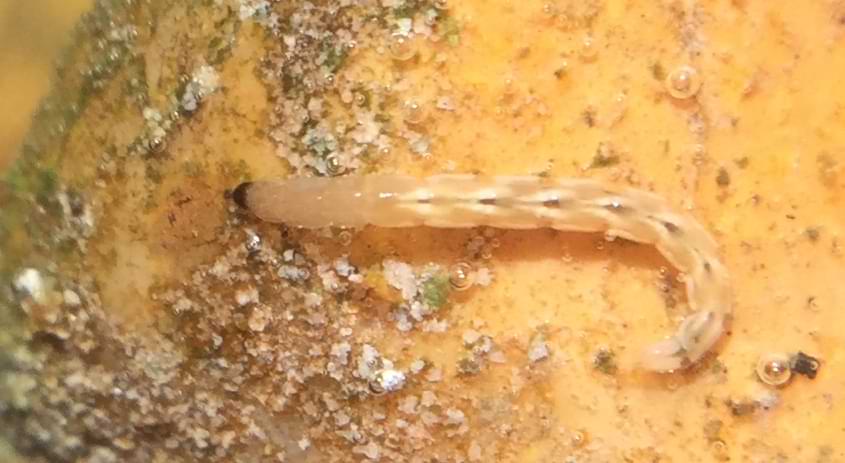
Unlike the mosquitoes these worms mostly stayed at the bottom of the water, eating the dead leaves and other detritus that had sunk down. They also liked to clump together in groups and rapidly undulate. I'm not sure what they were doing but it seemed like a fun time!

This one has the texture and plumpness of a bunch of grapes. Delicious!
The worms seemed to get darker as they aged and grew, until eventually I saw these two floating near the surface of the water, presumably getting ready to emerge as adult flies!
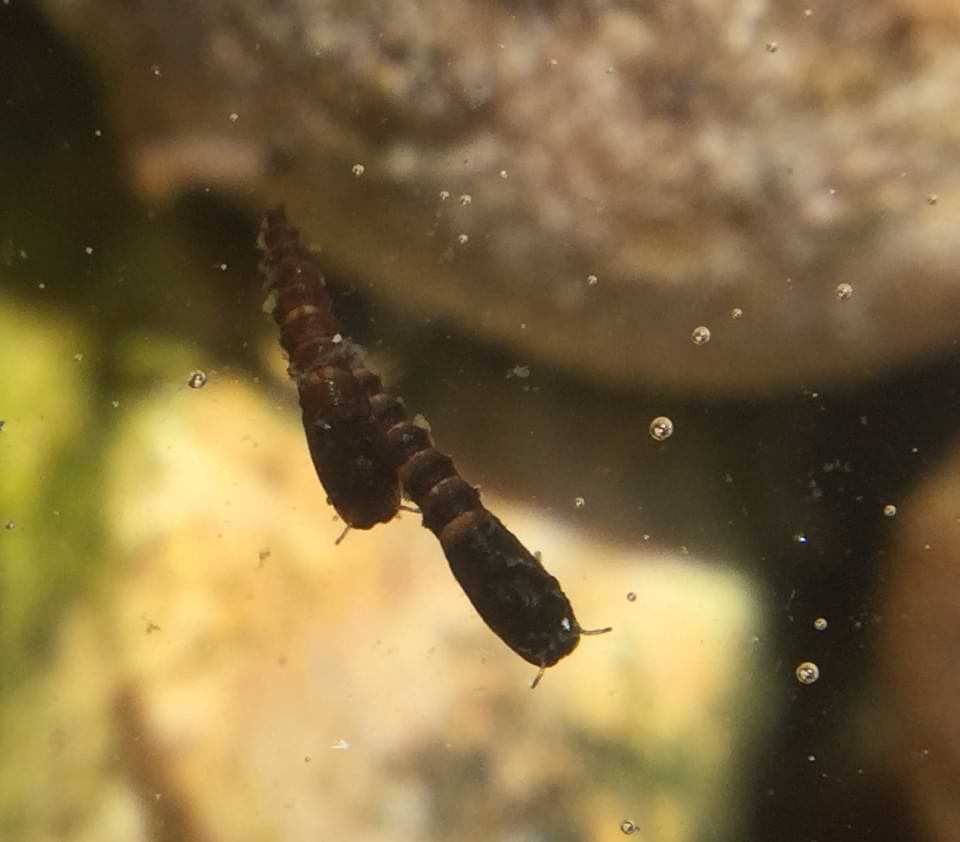
If you would like to attract some of these delightful creatures yourself, it's actually pretty easy. All I did was fill up an old stone bird bath with pebbles and water, and then place a few dead leaves to give the animals some decaying matter to eat. Mosquitoes in particular only really require stagnant water to spawn in so keeping any still pool of water will cause them to show up sooner or later.
Finally here's some of the mosquito larvae's cast-off moults. It's cool to see the outline of their old body imprinted in the underside.
